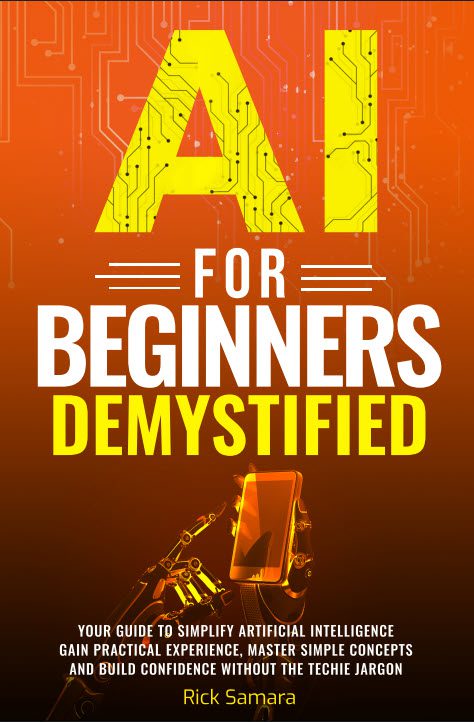In the digital age, creating high-quality content is essential for bloggers, businesses, and content creators who aim to stand out online. One often-overlooked aspect of content creation is the practice of citing sources. Properly citing sources in blog articles not only enhances credibility but also plays a significant role in improving Search Engine Optimization (SEO) and enabling effective AI discovery. This article explores the multifaceted importance of citing sources, detailing how it impacts SEO performance, supports AI-driven content analysis, and fosters trust with readers.
Enhancing SEO Performance Through Citations
Citing sources in blog articles can significantly boost a website’s SEO performance. Search engines like Google prioritize content that demonstrates authority, relevance, and trustworthiness. Including proper citations helps achieve these goals in several ways.
Establishing Authority and Expertise
 When a blog article includes citations from reputable sources, it signals to search engines that the content is well-researched and grounded in credible information. Google’s algorithms, particularly those influenced by E-A-T (Expertise, Authoritativeness, Trustworthiness), reward content that demonstrates expertise. By linking to high-quality, authoritative sources—such as academic journals, government websites, or industry-leading publications—bloggers can enhance their site’s perceived authority, which can improve search rankings (Google, 2023).
When a blog article includes citations from reputable sources, it signals to search engines that the content is well-researched and grounded in credible information. Google’s algorithms, particularly those influenced by E-A-T (Expertise, Authoritativeness, Trustworthiness), reward content that demonstrates expertise. By linking to high-quality, authoritative sources—such as academic journals, government websites, or industry-leading publications—bloggers can enhance their site’s perceived authority, which can improve search rankings (Google, 2023).
Encouraging Backlinks and Engagement
Citing sources often involves linking to external websites, which can foster reciprocal linking opportunities. When reputable sites notice that your blog references their content, they may reciprocate by linking back to your article, creating valuable backlinks. Backlinks are a critical ranking factor in SEO, as they indicate to search engines that your content is trustworthy and relevant (Moz, 2024). Additionally, well-cited articles are more likely to be shared by readers or referenced by other bloggers, increasing engagement metrics like time on page and social shares, which further boost SEO.
Reducing Risk of Penalties for Plagiarism
Search engines penalize websites that publish duplicated or plagiarized content. By properly citing sources, bloggers ensure that their content is original while giving credit to the original authors. This practice helps avoid penalties from algorithms like Google’s Panda, which targets low-quality or duplicated content (Search Engine Journal, 2022). Proper citations also demonstrate transparency, which aligns with search engines’ emphasis on trustworthiness.
Supporting AI Discovery and Content Analysis
As artificial intelligence (AI) becomes increasingly integral to content discovery and analysis, citing sources in blog articles is critical for ensuring compatibility with AI-driven systems. AI tools, including search engine crawlers and content aggregators, rely on structured and transparent data to evaluate and recommend content.
Improving AI Crawling and Indexing
 AI-powered search engines and content discovery platforms, such as those used by Google or AI-driven tools like Grok, analyze the structure and context of web content. Citations provide clear markers of where information originates, helping AI systems understand the relationships between your content and external sources. For example, linking to a primary source allows AI crawlers to verify the accuracy of your claims, improving the likelihood that your content will be indexed as reliable and relevant (Forbes, 2025).
AI-powered search engines and content discovery platforms, such as those used by Google or AI-driven tools like Grok, analyze the structure and context of web content. Citations provide clear markers of where information originates, helping AI systems understand the relationships between your content and external sources. For example, linking to a primary source allows AI crawlers to verify the accuracy of your claims, improving the likelihood that your content will be indexed as reliable and relevant (Forbes, 2025).
Enhancing Semantic Understanding
 AI systems use natural language processing (NLP) to interpret the meaning and context of content. Citations help AI tools identify the semantic connections between your blog and authoritative sources. For instance, referencing a study from a reputable institution in your article about health trends allows AI to associate your content with high-quality, topic-relevant information. This can improve your content’s visibility in AI-driven recommendation systems, such as those used in voice search or content aggregators (TechCrunch, 2024).
AI systems use natural language processing (NLP) to interpret the meaning and context of content. Citations help AI tools identify the semantic connections between your blog and authoritative sources. For instance, referencing a study from a reputable institution in your article about health trends allows AI to associate your content with high-quality, topic-relevant information. This can improve your content’s visibility in AI-driven recommendation systems, such as those used in voice search or content aggregators (TechCrunch, 2024).
Supporting Fact-Checking Algorithms
AI-powered fact-checking tools are increasingly used by platforms like X to verify the accuracy of online content. By citing credible sources, bloggers provide a clear trail for these algorithms to follow, ensuring that their content is recognized as factual and trustworthy. This is particularly important in an era where misinformation can lead to reduced visibility or penalties from platforms prioritizing accurate information (Wired, 2023).
Building Reader Trust and Engagement
Beyond SEO and AI discovery, citing sources is crucial for building trust with readers. In an online landscape filled with misinformation, readers value transparency and accountability in the content they consume.
Demonstrating Transparency and Credibility
When a blog article includes citations, it shows readers that the information is backed by research and expertise. This transparency fosters trust, encouraging readers to view the blog as a reliable source of information. For example, a blog post about climate change that cites reports from NASA or the IPCC is more likely to be taken seriously than one without sources (NASA, 2024). Trusted content also encourages repeat visits, increasing user retention and loyalty.
Encouraging Deeper Exploration
 Citations provide readers with opportunities to explore topics in greater depth by following links to primary sources or related content. This not only enhances the user experience but also increases time spent on your site, as readers may return to your article after exploring cited sources. Engaged readers are more likely to share your content, further amplifying its reach and SEO benefits (HubSpot, 2023).
Citations provide readers with opportunities to explore topics in greater depth by following links to primary sources or related content. This not only enhances the user experience but also increases time spent on your site, as readers may return to your article after exploring cited sources. Engaged readers are more likely to share your content, further amplifying its reach and SEO benefits (HubSpot, 2023).
Best Practices for Citing Sources in Blog Articles
To maximize the SEO and AI discovery benefits of citing sources, bloggers should follow best practices for citation formatting and implementation.
Use Reputable and Relevant Sources
Always choose sources that are authoritative and relevant to your topic. Peer-reviewed journals, government publications, and well-known industry websites are ideal choices. Avoid citing low-quality or outdated sources, as they can undermine your content’s credibility and harm SEO performance (APA, 2020).
Incorporate Citations Naturally
Citations should be seamlessly integrated into the text to maintain readability. Use in-text citations or hyperlinks to reference sources without disrupting the flow of the article. For example, instead of listing a source in a footnote, hyperlink relevant text to the source URL, making it easy for both readers and AI crawlers to access the referenced material.
Follow a Consistent Citation Style
Using a standardized citation style, such as APA, MLA, or Chicago, ensures clarity and professionalism. For this article, we use APA style, which is widely recognized and compatible with both academic and online content. Consistent formatting also helps AI systems parse citations more effectively (APA, 2020).
Conclusion
Citing sources in blog articles is a powerful strategy for improving SEO, supporting AI discovery, and building reader trust. By establishing authority, encouraging backlinks, and aligning with AI-driven content analysis, citations enhance a blog’s visibility and credibility in the digital landscape. Moreover, they demonstrate transparency and foster engagement, making your content more appealing to both search engines and readers. By adopting best practices for citing sources, bloggers can create high-quality, trustworthy content that stands out in an increasingly competitive online environment.
Sources
- American Psychological Association. (2020). Publication manual of the American Psychological Association (7th ed.). American Psychological Association.
- Forbes. (2025). AI and the future of content discovery. Retrieved from https://www.forbes.com
- Google. (2023). Search quality evaluator guidelines. Retrieved from https://www.google.com
- HubSpot. (2023). The importance of trust in content marketing. Retrieved from https://www.hubspot.com
- Moz. (2024). The beginner’s guide to SEO. Retrieved from https://moz.com
- NASA. (2024). Climate change: Evidence and causes. Retrieved from https://www.nasa.gov
- Search Engine Journal. (2022). Understanding Google’s Panda algorithm. Retrieved from https://www.searchenginejournal.com
- TechCrunch. (2024). The role of NLP in modern search engines. Retrieved from https://techcrunch.com
- Wired. (2023). The rise of AI fact-checking in social media. Retrieved from https://www.wired.com
Citations
- (American Psychological Association, 2020)
- (Forbes, 2025)
- (Google, 2023)
- (HubSpot, 2023)
- (Moz, 2024)
- (NASA, 2024)
- (Search Engine Journal, 2022)
- (TechCrunch, 2024)
- (Wired, 2023)



